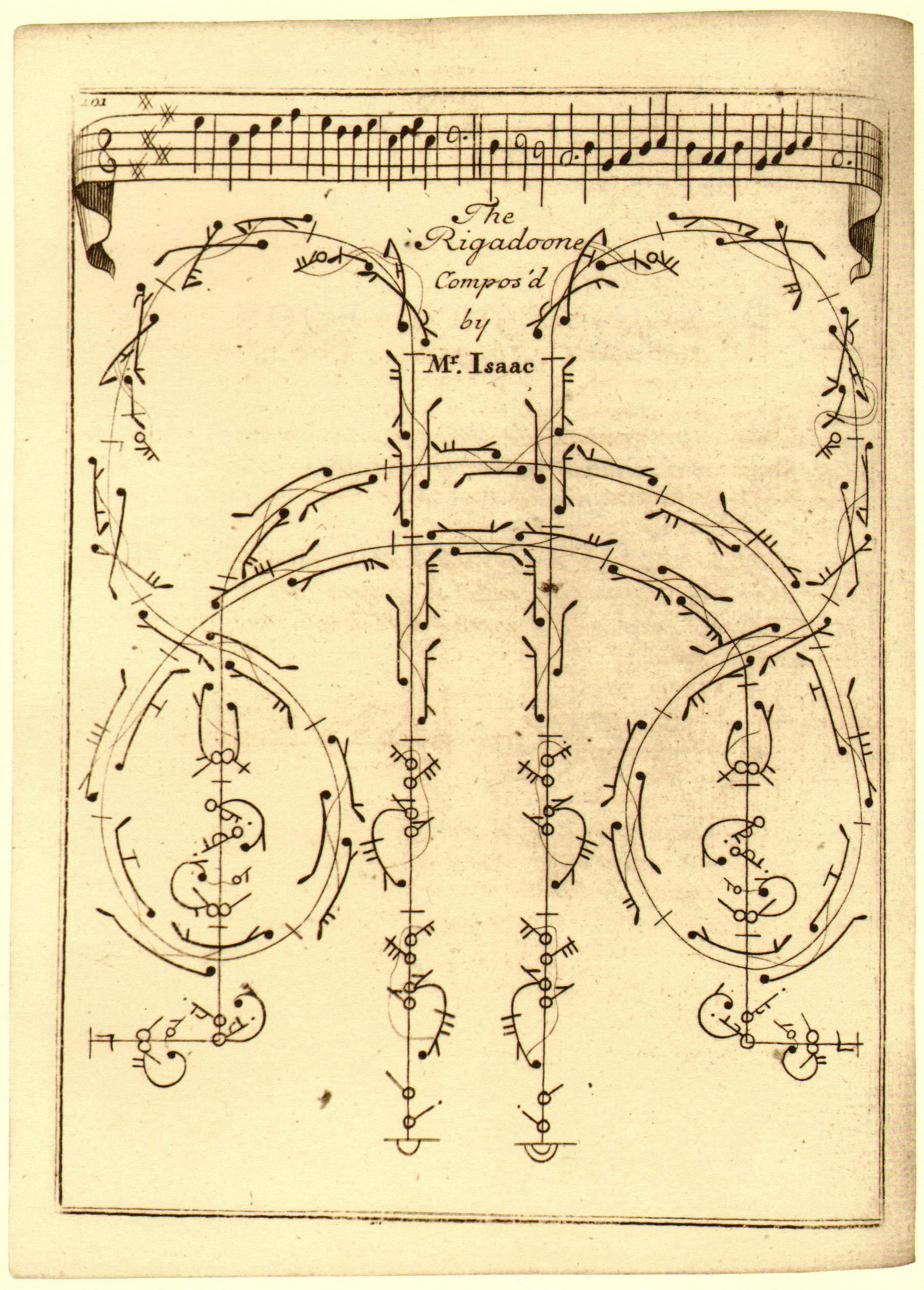Rigaudon on:
[Wikipedia]
[Google]
[Amazon]
 The rigaudon (also spelled rigadon, rigadoon) is a French
The rigaudon (also spelled rigadon, rigadoon) is a French
 The rigaudon (also spelled rigadon, rigadoon) is a French
The rigaudon (also spelled rigadon, rigadoon) is a French baroque dance
Baroque dance is dance of the Baroque era (roughly 1600–1750), closely linked with Baroque music, theatre, and opera.
English country dance
The majority of surviving choreographies from the period are English country dances, such as those ...
with a lively duple metre
Duple metre (or Am. duple meter, also known as duple time) is a musical metre characterized by a ''primary'' division of 2 beats to the bar, usually indicated by 2 and multiples (simple) or 6 and multiples (compound) in the upper figure of the tim ...
. The music is similar to that of a bourrée
The bourrée ( oc, borrèia; also in England, borry or bore) is a dance of French origin and the words and music that accompany it. The bourrée resembles the gavotte in that it is in double time and often has a dactylic rhythm. However, it is ...
, but the rigaudon is rhythmically simpler with regular phrases (eight measure phrases are most common). It originated as a sprightly 17th-century French folk dance for couples. Traditionally, the folkdance was associated with the provinces of Vivarais, Languedoc
The Province of Languedoc (; , ; oc, Lengadòc ) is a former province of France.
Most of its territory is now contained in the modern-day region of Occitanie in Southern France. Its capital city was Toulouse. It had an area of approximately ...
, Dauphiné
The Dauphiné (, ) is a former province in Southeastern France, whose area roughly corresponded to that of the present departments of Isère, Drôme and Hautes-Alpes. The Dauphiné was originally the Dauphiné of Viennois.
In the 12th centu ...
, and Provence
Provence (, , , , ; oc, Provença or ''Prouvènço'' , ) is a geographical region and historical province of southeastern France, which extends from the left bank of the lower Rhône to the west to the Italian border to the east; it is bor ...
in southern France, and it became popular as a court dance during the reign of Louis XIV
, house = Bourbon
, father = Louis XIII
, mother = Anne of Austria
, birth_date =
, birth_place = Château de Saint-Germain-en-Laye, Saint-Germain-en-Laye, France
, death_date =
, death_place = Palace of Vers ...
. Its hopping steps were adopted by the skillful dancers of the French and English courts, where it remained fashionable through the 18th century. By the close of the 18th century, however, it had given way in popularity as a ballroom dance (along with the passepied
The passepied (, "pass-foot", from a characteristic dance step) is a French court dance. Originating as a kind of Breton branle, it was adapted to courtly use in the 16th century and is found frequently in 18th-century French opera and ballet, ...
, bourrée
The bourrée ( oc, borrèia; also in England, borry or bore) is a dance of French origin and the words and music that accompany it. The bourrée resembles the gavotte in that it is in double time and often has a dactylic rhythm. However, it is ...
, and gigue
The gigue (; ) or giga () is a lively baroque dance originating from the English jig. It was imported into France in the mid-17th centuryBellingham, Jane"gigue."''The Oxford Companion to Music''. Ed. Alison Latham. Oxford Music Online. 6 July 200 ...
) to the minuet
A minuet (; also spelled menuet) is a social dance of French origin for two people, usually in time. The English word was adapted from the Italian ''minuetto'' and the French ''menuet''.
The term also describes the musical form that accompa ...
.
Sources
Further reading
* * * * * Baroque dance French dances Dance forms in classical music {{dance-stub